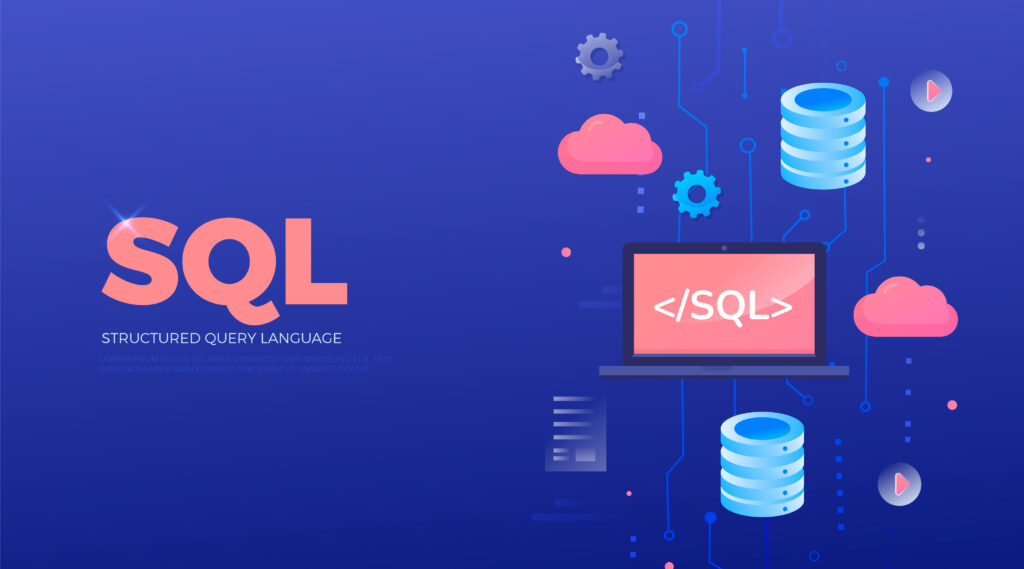
Two prominent database models have emerged – SQL (Structured Query Language) and NoSQL (Not Only SQL) – each comes with its own set of characteristics, advantages, and disadvantages, catering to different needs in the diverse realm of data storage and retrieval. In this comprehensive blog, we will delve into the intricacies of SQL and NoSQL difference, exploring their features, advantages, and disadvantages.
SQL and NoSQL Difference
Understanding SQL Databases:
A beginner’s guide to learning web development can benefit greatly from understanding the role of SQL databases. SQL databases are well-suited for applications with a clear and well-defined data structure, where maintaining data integrity and transactional consistency are of utmost importance. The structured nature of SQL databases makes them an excellent choice for scenarios where the relationships between different pieces of data are crucial, such as in financial systems or enterprise-level applications. In the coming section, we will explore and compare their features, advantages, and disadvantages to provide a comprehensive understanding of the database landscape.
Features:
- Structured Schema:
– SQL databases follow a structured schema, enforcing a predefined structure for data storage.
– Tables, rows, and columns are used to organize and store data, creating a clear and well-defined structure.
- Data Integrity:
– SQL databases maintain data integrity by enforcing constraints such as primary keys, foreign keys, and unique constraints.
– ACID (Atomicity, Consistency, Isolation, Durability) properties ensure transactional reliability.
- Scalability:
– SQL databases are traditionally vertically scalable, meaning you can increase capacity by increasing the power of the existing hardware.
Advantages:
- Consistency:
– The structured nature of SQL databases ensures data consistency across the entire database.
– Well-suited for applications with complex queries and relationships between data.
- ACID Properties:
– ACID properties guarantee the reliability of transactions, ensuring that database operations are completed successfully or not at all.
- Mature Technology:
– SQL databases have been around for decades and are well-established, with a vast ecosystem of tools and support.
Disadvantages:
- Scalability Challenges:
– Vertical scalability has limits, making it challenging to scale SQL databases horizontally across multiple servers.
- Schema Rigidity:
– The predefined schema can be restrictive when dealing with dynamic, evolving data structures.
Exploring NoSQL Databases:
In the evolving landscape of web and app development in the era of AI, the choice between SQL and NoSQL difference on databases plays a crucial role. NoSQL databases offer a flexible and scalable approach to data management, making them well-suited for applications with dynamic data requirements and scalability needs. The choice between SQL and NoSQL depends on the specific characteristics of the data and the goals of the application. NoSQL databases shine in scenarios where flexibility, horizontal scalability, and performance are prioritized over strict consistency. In the ever-evolving landscape of data management, organizations often find themselves utilizing a combination of SQL and NoSQL databases to meet the diverse needs of modern applications. Let’s delve into the features, advantages, and disadvantages of NoSQL databases. Additionally, exploring the 15 compelling advantages of opting for custom WordPress website development sheds light on the importance of selecting the right tools and technologies to meet the evolving demands of the digital world.
Features:
- Schema-less Design:
– NoSQL databases are schema-less, allowing for dynamic and flexible data models.
– Documents, key-value pairs, wide-column stores, and graphs are common NoSQL data models.
- Scalability:
– NoSQL databases excel at horizontal scalability, making them suitable for handling large volumes of data across distributed systems.
- Variety of Data Models:
– NoSQL databases support various data models, providing versatility to handle different types of data effectively.
Advantages:
- Flexible Schema:
– NoSQL databases can adapt to changing data requirements, making them ideal for applications with evolving data structures.
- Horizontal Scalability:
– NoSQL databases can easily scale horizontally by adding more nodes to the database, accommodating growing data volumes.
- Performance:
– NoSQL databases often exhibit better performance for specific use cases, such as read and write-intensive operations.
Disadvantages:
- Consistency Challenges:
– NoSQL databases may sacrifice strong consistency in favor of availability and partition tolerance, leading to eventual consistency.
- Limited Transaction Support:
– Some NoSQL databases may not provide full ACID compliance, which can be a drawback in scenarios requiring strict transactional guarantees.
- Learning Curve:
– NoSQL databases introduce new concepts and technologies, requiring a learning curve for developers accustomed to traditional SQL databases.
Choosing Between SQL and NoSQL:
The decision to choose between SQL and NoSQL depends on various factors, including the nature of the data, scalability requirements, and the complexity of the application. Here are a few factors to help steer your choice:
- Nature of Data:
– Choose SQL if your data has a well-defined structure and complex relationships.
– Opt for NoSQL if your data is dynamic, unstructured, or semi-structured.
- Scalability Requirements:
– If horizontal scalability is a priority, NoSQL databases are often the preferred choice.
– For applications with moderate scalability needs and a well-defined schema, SQL databases may suffice.
- Consistency vs. Performance:
– If strong consistency is crucial for your application, SQL databases are a safer bet.
– If performance and scalability take precedence, NoSQL databases might be a better fit, even if it means eventual consistency.
In conclusion, Tecfuge Business Solutions’ approach highlights the importance of understanding the unique strengths and weaknesses of both SQL and NoSQL databases. By embracing a hybrid strategy, we optimally address the diverse needs of its applications, ensuring a harmonious balance between structured, transactional data, and dynamic, scalable datasets. As the database landscape continues to evolve, organizations can draw inspiration from Te’s success, adapting their strategies to harness the full potential of SQL and NoSQL databases in a complementary fashion. The key lies in the thoughtful consideration of specific use cases and the continuous exploration of emerging technologies, including those outlined in the Mobile App Development Trends for 2024, to stay ahead in the ever-changing world of data management. Furthermore, we will ponder the question: Will AI Takeover Web Development In the Future?.
